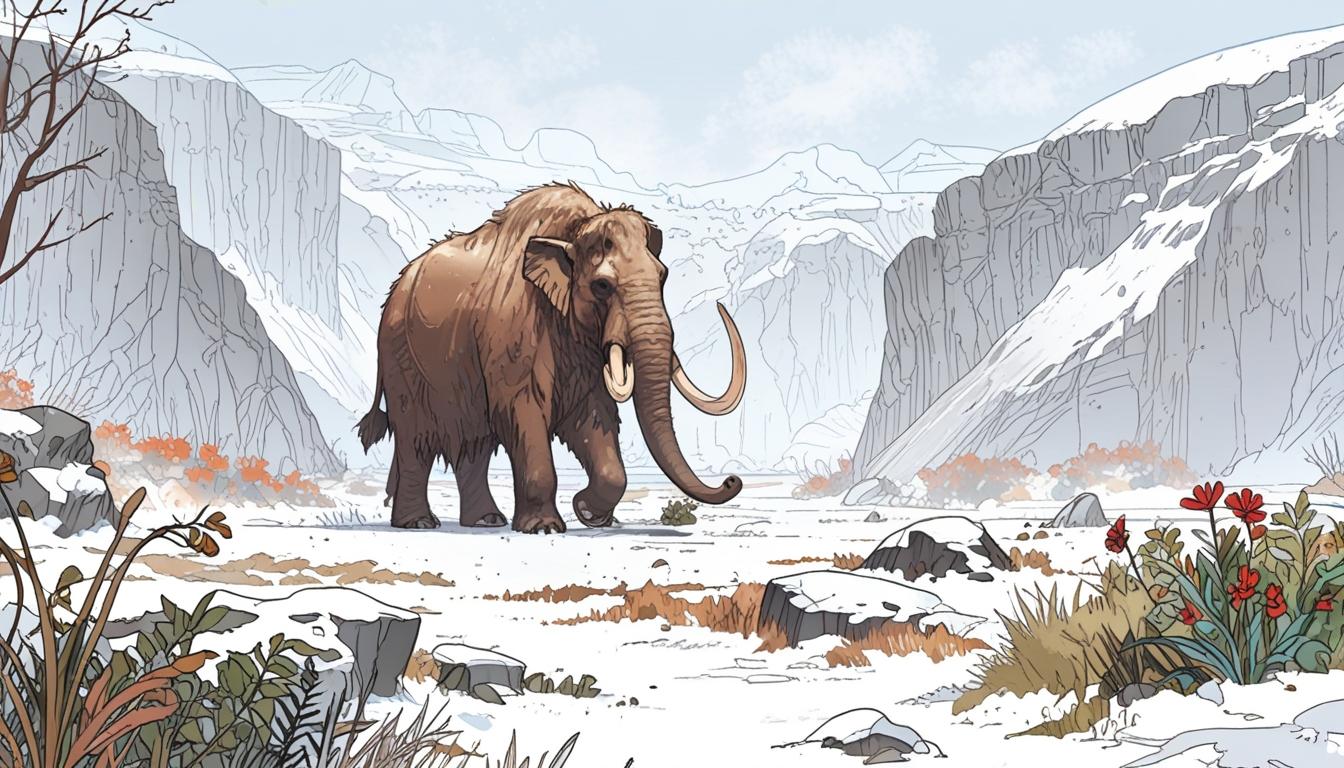Scientists at Colossal Biosciences are making strides towards the potential reintroduction of woolly mammoths into the wild, following their previous success in reviving dire wolves. Established in January with $200 million in funding, the company is leveraging advancements in genetic technology to pursue this groundbreaking project.
Woolly mammoths roamed the Earth for hundreds of thousands of years, inhabiting regions across Europe, Asia, and North America from around 300,000 years ago until their extinction approximately 10,000 years ago. Their last known population persisted until around 1650 BC. These impressive animals, comparable in size to modern African elephants, were distinguished by their two thick layers of fur and smaller ears, adaptations that allowed them to thrive in frigid environments.
While the precise reasons for their extinction remain unclear, factors such as human hunting activities, habitat loss, and climatic shifts are thought to have contributed significantly. With their unique and compelling traits, woolly mammoths have long captivated the imagination of scientists and the public alike.
Ben Lamm, CEO of Colossal, has expressed optimism about the project, stating that he believes woolly mammoth calves could be seen as early as late 2028. "Our recent successes in creating the technologies necessary for our end-to-end de-extinction toolkit have been met with enthusiasm by the investor community," Lamm was quoted as saying. "This funding will grow our team, support new technology development, expand our de-extinction species list while continuing to allow us to carry forth our mission to make extinction a thing of the past."
As part of their approach, Colossal Biosciences has already sequenced the genome of the woolly mammoth. They are in the process of gene editing, which involves integrating specific mammoth genes into the DNA of Asian elephants, the species closest genetically to the extinct mammoths. Lamm likens this approach to a reverse application of the concepts presented in the film "Jurassic Park," noting that rather than extracting ancient DNA, their team is strategically introducing mammoth genes into living elephant DNA.
Research indicates that Asian elephants share approximately 95% of their genetic makeup with woolly mammoths. By pinpointing differences in their genomes, Colossal researchers have identified key "target genes" that influence whether an organism exhibits characteristics of a woolly mammoth or an elephant. Employing advanced gene editing techniques such as CRISPR, the team is now capable of inserting genes responsible for traits like the woolly mammoth's thick fur into the genome of Asian elephants.
Lamm further elaborated, stating, "You can think of DNA being like a twisted ladder with each little rung being a base pair. We are able to change each rung of the ladder, but now we also have the ability to engineer new pieces of the ladder that we want to be there." The hybrid DNA created could lead to pluripotent stem cells, which have the potential to develop into various types of tissues.
As research continues and technology advances, the project holds promises of revitalising an iconic member of the prehistoric ecosystem, demonstrating the evolving intersection of science and nature.
Source: Noah Wire Services
